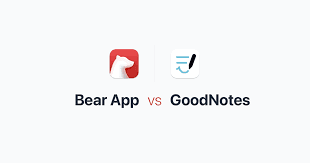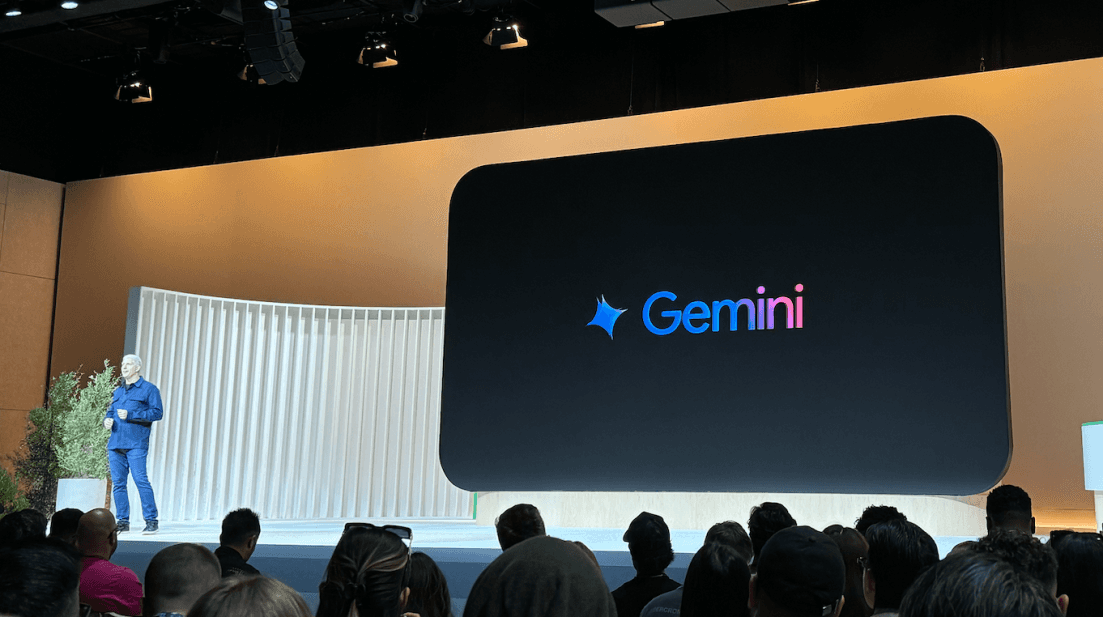Timon Harz
December 9, 2024
Meta Quest 3(S) and Apple Vision Pro: What it's like to live and work in mixed reality for a week
Our author dives into mixed reality for a week. With Meta's Quest 3(S) and Apple's Vision Pro on his head, he wants to find out whether these headsets really bring a new experience to work and life.

Putting on a headset in the morning and taking it off again to sleep: It was to be a week of experimentation, seven days of living as exclusively as possible in virtual and augmented reality. Equipped with the Meta Quest 3, the 3S and the Vision Pro from Apple, I was actually quite interested and also optimistic that I would perhaps get to know a more effective way of working during this week. And possibly even new types of entertainment to make the evening on the sofa more immersive. In other video game or film worlds; no longer just watching, but right in the middle of it. But always in such a way that I can also see my surroundings. Mixed reality means both: the ability to immerse myself in virtual reality. And the ability to integrate augmented content into my real environment.
The Meta Quest 3, 3S, and Apple Vision Pro are leading-edge devices in mixed and virtual reality. Each headset represents a leap forward in immersive technology, providing unique features and use cases:
Meta Quest 3

The Meta Quest 3 brings significant enhancements over its predecessors, such as slimmer pancake lenses and a dual-LCD display with 2064×2208 pixels per eye, delivering a 4K+ resolution. These upgrades create crisp visuals with better depth, while the improved field of view (110° horizontally) enhances immersion. Mixed-reality functionality offers high-resolution color passthrough, allowing users to interact with their physical surroundings while immersed in VR. Enhanced hand tracking adds a futuristic layer of interaction, letting users swipe and tap without controllers, though its haptic controllers still need refinement. The headset targets diverse applications, from gaming to fitness and productivity.
Meta Quest 3S
While detailed information on the Quest 3S is limited, it likely builds on the Quest 3’s foundation with further refinements in hardware or software, focusing on accessibility or specific use cases like gaming.
Apple Vision Pro

Apple’s Vision Pro takes mixed reality to another level with its groundbreaking technology. Featuring dual micro-OLED displays with an incredible resolution of 23 million pixels and a 120-degree field of view, it sets a new standard for clarity and immersion. The Vision Pro seamlessly blends virtual content with real-world surroundings using advanced sensors and depth-sensing cameras. This device emphasizes both professional productivity and personal entertainment, showcasing Apple's signature design and integration with its ecosystem.

Each of these devices showcases unique strengths: the Meta Quest 3 for its affordability and versatility, and the Vision Pro for its premium, cutting-edge features.
For the next seven days, I set out to live as fully immersed in mixed reality as possible, balancing work, play, and everyday life. With the Meta Quest 3, 3S, and Apple Vision Pro at my disposal, I was intrigued to see if these devices could genuinely improve my productivity during the day and make my downtime more engaging at night.
The goal was simple: use these devices for as much of my daily routine as possible while maintaining a sense of connection to my real-world surroundings. Would mixed reality enhance how I organize tasks or collaborate? Could it turn a casual movie night into a fully immersive cinematic experience? And more importantly, would wearing a headset for hours on end feel natural—or just like a tech experiment gone too far?
In my workspace, I planned to leverage virtual desktops, note-taking tools, and collaborative apps to replace traditional screens. Evenings would be about diving into vivid virtual worlds, blending real and augmented content for relaxation and fun. From interacting with colleagues in VR to cooking dinner with augmented recipe overlays, I was ready to explore the boundaries of what these devices could offer.

My optimism was cautious, though. Mixed reality promises much, but would the technology live up to its potential? Would it seamlessly integrate into my daily life—or would it feel like a collection of impressive but disconnected features? These were the questions I set out to answer over the week.
The Setup
The Meta Quest 3 represents a significant leap in mixed-reality technology, combining virtual reality (VR) and augmented reality (AR) capabilities. It features a 4K+ Infinite Display with state-of-the-art pancake lenses, offering a sharp resolution of 2064×2208 pixels per eye and a wider field of view compared to its predecessors. The device is powered by the Snapdragon XR2 Gen 2 processor, delivering twice the graphical performance of the Quest 2. This ensures smoother gameplay and higher fidelity in mixed-reality applications.
Meta Quest 3 also comes equipped with full-color passthrough, enabling users to blend virtual content seamlessly into their physical environment. The redesigned Touch Plus controllers are sleeker, more responsive, and provide improved hand-tracking integration for natural interactions. The headset supports Meta’s extensive VR content library, with planned exclusive titles like Asgard’s Wrath 2 optimized for its advanced capabilities.
Meta Quest 3S

The Meta Quest 3S offers a more affordable entry point to mixed reality while retaining many features of the Quest 3, including full-color passthrough and compatibility with thousands of apps and games. Priced at $299.99, it targets newcomers to mixed reality and casual users. The 3S uses the same hardware platform but offers fewer storage options (up to 128GB). Despite its cost-effectiveness, the headset supports many of the same immersive entertainment and productivity tools, including fitness apps, virtual theaters, and collaborative environments like Horizon Worlds.

Apple Vision Pro
Apple’s Vision Pro is positioned as a premium spatial computing device, blending AR and VR in a way that prioritizes integration with its ecosystem. Featuring dual 4K micro-OLED displays, it delivers stunning visual clarity. The device is powered by the M2 chip alongside the R1 chip for real-time processing, ensuring ultra-low latency in AR experiences. Vision Pro supports intuitive eye and hand tracking, removing the need for controllers, and includes advanced sensors for spatial awareness. With a focus on productivity, Vision Pro offers seamless integration with macOS and iOS, allowing users to expand their workflows into a mixed-reality environment.

Together, these devices illustrate the growing diversity in mixed-reality offerings, catering to a range of users from enthusiasts to professionals and casual adopters.
Preparation: How You Set Up Your Environment for Mixed Reality
Living in mixed reality for a week starts with setting up a space where both the physical and virtual worlds can seamlessly blend. Here's how to get your environment ready for devices like the Meta Quest 3 or Apple Vision Pro:
Designate a Safe Area
Mixed reality experiences often require movement, so clear an area free of obstacles. For the Meta Quest 3, the headset can automatically map your room using its external cameras and depth sensors. This quick setup scans your environment, overlays a digital mesh, and defines a boundary to ensure safe interactions. You can also manually adjust this boundary for more control. Ensure the play area is well-lit for optimal tracking and passthrough clarity.Optimize Furniture and Surfaces
Augmented reality apps often integrate with your surroundings. For instance, you might place virtual objects on real-world tables or sit on your couch to enjoy immersive content. Arranging your furniture to accommodate these scenarios enhances the mixed reality experience.Adapt for Work or Productivity
If you’re planning to use mixed reality for work, like creating multiple virtual monitors with applications such as Immersed, ensure your workspace is ergonomically set up. You’ll need visibility of your physical keyboard and mouse alongside virtual interfaces, so position your desk accordingly.Enhance Immersion with Accessories
Consider upgrading your headset with accessories like comfort straps or battery extenders to maximize comfort for long sessions. Noise-canceling headphones can also improve immersion, whether you’re diving into virtual meetings or playing a game.Prepare Your Tech Ecosystem
Mixed reality thrives on connectivity. Sync your devices and apps beforehand, ensuring compatibility with your headset. For instance, the Apple Vision Pro seamlessly integrates with macOS for productivity, while Meta Quest 3 supports a range of entertainment and creative apps like Painting VR or Beat Saber.
By tailoring your environment and tools to mixed reality's unique demands, you’ll not only avoid potential pitfalls but also unlock the full potential of these cutting-edge technologies.
Before diving into the experiment, I was excited by the possibilities of what these new mixed-reality headsets could offer. The Meta Quest 3 and Apple Vision Pro, both cutting-edge devices, seemed like they could truly redefine how we experience both work and entertainment. My anticipation was mainly rooted in their ability to blend virtual and real worlds seamlessly. The Quest 3 was intriguing with its ability to deliver immersive VR experiences while integrating augmented reality (AR) into my surroundings through color pass-through, offering a more natural interaction with the real world.
I was also curious about the Vision Pro's high-resolution display, claiming to be "better than 4K," and its focus on creating a seamless spatial computing experience that could change the way I interact with apps, games, and even work tasks. Both headsets promised to be more than just entertainment tools; they were positioned as devices that could elevate productivity, with the Vision Pro emphasizing spatial computing for work tasks and the Quest 3 introducing a richer gaming experience, including AR gaming.

Overall, I was optimistic that I might discover new ways to be productive and entertained—ways that go beyond the traditional screen and bring me into immersive environments, but still with the flexibility to stay connected to the world around me.
Favorite use case?

My favorite way to use the Vision Pro is by watching shows and movies — including 3D films. While Apple’s Immersive Video format is amazing, putting you right there with Alicia Keys or on a mountaintop with an adventurer, 3D movies are available now.
Apple TV+ offers over 150 3D movies, from Dune and Avatar to The Super Mario Brothers. Disney+ has nearly 50 3D films of its own. I got completely immersed in Avengers: Infinity War, and I’d argue the depth of the experience rivals or even surpasses the theater, especially during intense action scenes.

Even if you’re not a fan of 3D, you’ll still enjoy watching shows and movies on the Vision Pro. I watched Oppenheimerand was blown away by how stunning it looked. The Last of Us was even more immersive, especially during a scene where Ellie tries to escape an evil preacher with a burning building all around them. Needless to say, I needed a break after that!
Least favorite use case?

Despite the promises that the Vision Pro will boost productivity, I don’t think it’s the game changer I hoped for. It’s cool to be able to pin windows around your space, and when working from home, I do feel more engaged and focused. With my MacBook Pro 14-inch desktop floating in front of me and Slack and Apple Music off to the sides, I’m definitely more in the zone.
But there are a few things that pull me out of my comfort zone. For one, the Vision Pro is too heavy to wear for more than an hour or two while sitting up, even if you switch to the more comfortable dual loop band. I’d recommend this band since it balances the weight better, but I don’t like wearing it because, honestly, it messes up my hair and I have a sensitive scalp.

After a while, I start to get a sore neck and feel pressure around my eyes when using the Vision Pro. And then there's the hassle of carrying it around. It adds a lot of weight to my bag, making me think twice about bringing the Vision Pro home from work or taking it into the office.
What did I misjudge?

If there’s one thing I misjudged about the Vision Pro, it’s the battery. Sure, I wish you didn’t have to carry it around, but it’s not as bad as I expected. When using the Vision Pro, you can easily slip the battery into your pocket while standing, or place it on the desk next to you when sitting and plug it in for continuous power. It’s much less of a hassle than I thought it would be.
I also underestimated the Environments. At first, I thought they were just fancy desktops, but they actually add a level of immersion that can take you anywhere in the world. While it’s no substitute for real travel, I really enjoy how third-party apps are creating their own Environments, like the Iron Throne room in the Max app and Avengers Tower in the Disney+ app.
What’s still missing?

When it comes to what's missing from the Apple Vision Pro, the lack of a Netflix app stands out. While you can access Netflix through Safari, it’s not ideal, and you can’t download shows to watch offline without Wi-Fi.
An even bigger gap is Google. There’s no YouTube, Gmail, Google Docs, or Google Meet—services I use every day. Sure, I can access these through the MacBook Virtual Display feature, but I still can’t join Google Meet meetings using my Digital Persona.
Speaking of my Persona, it’s cool that I can use it for meetings and that it mimics my blinks and smirks, but it’s also a bit creepy. I’m not sure how much better this feature will get after beta, or how many people will be comfortable treating it like a normal video call, especially for business.
Vision Pro after 1 month: Bottom line

When I first tried the Vision Pro, I described it in three words: amazing, immersive, and pricey. I still stand by that, but after using it for a month, I’d add three more: entertaining, heavy, and a bit lonely.At $3,500, it’s still a tough sell for most, but the Vision Pro is definitely carving its own niche in the mixed-reality headset space. Not everyone is ready to jump on board, and that’s perfectly fine. Personally, I’m excited to see where Apple and developers take this next, especially in spatial gaming and reimagining how we experience sports.Even if you can’t afford one or aren’t ready to dive into spatial computing, I don’t blame you. But you should still try the Vision Pro at an Apple Store—or borrow one from a friend—to get a glimpse of what the future holds.
Day-to-Day Breakdown
During the first two days of using the Meta Quest 3 and Apple Vision Pro, adjusting to the headsets' weight and fit can be a challenge. Both headsets are designed for longer usage, but they do take time to get used to, especially when wearing them for extended periods. The Quest 3, in particular, features improved comfort compared to its predecessors, with a more secure fit and better spatial detection. However, even with these enhancements, adapting to a new workflow that involves integrating augmented content into the real environment may take some time.
On days 3 and 4 of my mixed-reality experiment, I really started to feel the strengths and limitations of both the Meta Quest 3 and Apple Vision Pro when it comes to productivity.

With the Meta Quest 3, I enjoyed the immersive experience, especially for gaming and social activities, where the device truly excels. However, when it came to work, the Quest 3 didn’t offer much beyond some VR simulations and basic productivity tools. It’s clear that while it’s excellent for entertainment and multi-user experiences, it doesn’t quite replace a traditional computer setup. The virtual environments were fun, but I struggled to stay as productive as I would on a laptop or desktop. For instance, the Quest 3’s VR workspace wasn’t as effective for handling complex tasks like text editing or multitasking.

In contrast, the Apple Vision Pro impressed me with its high-resolution display and multitasking capabilities. I could place virtual windows wherever I wanted, making it feel like I had an unlimited number of screens to work with. This flexibility was particularly useful when I needed to reference multiple documents or apps simultaneously. While the AR features allowed me to blend virtual objects with my physical surroundings, the experience felt more polished for professional use, especially when interacting with Apple's ecosystem. Still, I did find the app ecosystem for productivity somewhat limited, and it didn’t entirely replace the efficiency of using a physical monitor or desktop computer.

Both devices have their strengths: the Vision Pro is ideal for those who need to blend real and digital environments for creative tasks, while the Quest 3 is better for casual work and entertainment. Neither device is perfect for full-scale productivity, but they each offer unique advantages depending on the specific task at hand.
During my entertainment immersion tests on days 5 and 6, I dived into various games and media experiences using the Meta Quest 3 and Apple Vision Pro. The Quest 3 excelled in gaming, offering a wide range of over 1,000 apps and delivering a solid VR experience. Its controllers provided a more interactive gaming environment, while the Vision Pro impressed with its cinema-like quality, especially when paired with immersive environments like a jungle setting while watching movies.

Both headsets offered unique advantages. The Vision Pro's multitasking and ability to seamlessly blend digital and physical worlds for relaxation were impressive. However, the Quest 3's more focused gaming capabilities made it a go-to for interactive entertainment. Each headset delivered a unique take on virtual and augmented experiences, but I found that my preference leaned towards the Vision Pro for cinematic enjoyment, while the Quest 3 was ideal for gaming.

After spending the past week immersed in mixed reality (MR) using the Quest 3, I've been pleasantly surprised by how seamlessly it blends into daily activities like cooking and exercise. The ability to bring virtual elements into real-world spaces is more than just a novelty—it's an actual boost to productivity and enjoyment in ways I didn’t expect.
For instance, in the kitchen, I was able to follow recipes more efficiently with step-by-step virtual guidance that stayed in my field of view without needing to touch my phone. This reduced the mess and time spent switching between apps or scrolling through pages. The blend of digital and physical elements not only streamlined tasks but also kept me focused.

During my exercise routine, the MR experience took things up a notch. Using apps like Synth Riders, which combines rhythm gaming with physical activity, turned my usual workout into an engaging, immersive experience. The physical movement required in MR games like this makes exercise feel less like a chore and more like a fun, rewarding activity.
In both cases, mixed reality provided a layer of interaction and convenience I hadn’t anticipated. It wasn’t just about visual enhancement—it actively supported the tasks at hand, offering benefits that extended beyond entertainment into practical daily use. This made the technology feel more integrated and valuable.
Swipe and scroll: Windows everywhere
Basically, each app runs in its own window, which appears to float in the air a few metres in front of you. With a kind of pincer gesture, the windows can be grabbed and positioned anywhere in the virtual space: left, right, top, bottom - closer or further away. To do this, you ‘grab’ the small horizontal bar under the app window with your thumb and index finger and move it freely around the room. The highlight: the windows even memorise their position in the surroundings. Anyone watching a film on Disney+ in the bedroom, for example, will find the window in the same place the next day - until it is closed. This can only be a problem if you wear the glasses in moving vehicles. Then the Disney Plus window on the railway line from Hamburg to Berlin may get stuck somewhere near Ludwigslust when Spandau is already in sight. To prevent this, you can activate the travelling mode before starting your journey. If you press and hold the crown for three seconds, the current window is aligned in a straight line and centred on the point in front of you that you are currently looking at. This is practical because each window can be positioned anywhere in the room and its size, distance and angle can be changed. After a while, some windows will hang crookedly or chaotically around the virtual room. If this becomes too much for you, simply say: ‘Siri, close all my apps.’
Press contact
Timon Harz
oneboardhq@outlook.com
Other posts
Company
About
Blog
Careers
Press
Legal
Privacy
Terms
Security




